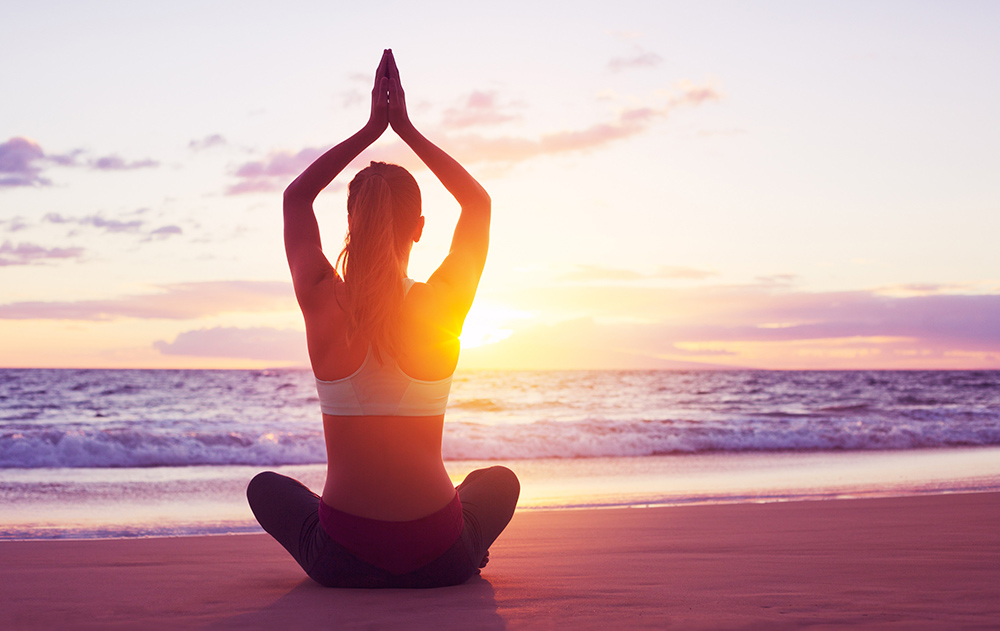Blog
9 Different Types of Yoga to Try

We talk about yoga a lot here at Fab Fit Travel. We even offer yoga on the beach classes as part of our destination vacations.
However, “yoga” could mean just about anything, right? There are SO many different types of yoga that it can get a little confusing.
Well, since nine is a magic/divine number, we decided to share nine of our favorite types of yoga. Please feel free to look up the ones that pique your interest for more information – and leave us a comment if you give them a try! We’d love to hear your experiences and which yoga practices worked best for you.
- Anusara
Developed by American yogi John Friend in 1997, Anusara yoga is based on the belief that we’re all filled with intrinsic goodness – and uses rigorous exercises in order to “open” practitioner’s hearts and minds.
Anusara is known for being a very “accepting” form of yoga in that it encourages people to express themselves through whatever poses they are physically capable of doing, rather than trying to force everyone into the same positions regardless of fitness/flexibility levels.
- Ashtanga
Ashtanga is one of the stricter forms of yoga, and is great for yoga perfectionists. You move through six established and strenuous pose sequences, which are practiced sequentially as progress is made.
Ashtanga yoga moves rapidly, flowing from one pose to the next with each inhale and exhale – linking the series of moves through breath.
Most Ashtanga yoga classes are guided, as you’re expected to perform the exact same six sequences of moves each time you practice. However, some classes will expect you to know what you’re doing ahead of time and do the moves on your own (though usually there’s a teacher around who can help you, if you ask ahead of time).
- Bikram
Bikram is a form of “hot yoga” and has participants practice their moves in a sauna-like room, with the heat cranked up to around 105 degrees Fahrenheit and around 40% humidity.
Bikram, like Ashtanga, features pre-set yoga postures. You’ll be going through a series of 26 poses, each performed twice, with two breathing exercises in-between sets.
Although you’ll be performing a predictable sequence, that lasts about 90 minutes per session, the class can feel strenuous due to the increased heat. Be sure you’re well-hydrated before you start and take breaks if you need to.
- Hatha
The term “Hatha” actually refers to any yoga that teaches physical postures. In a way, all yoga is Hatha yoga.
However, most Hatha yoga classes focus on very basic/classic yoga poses and breathing exercises. It tends to be slower-paced and is great for beginners.
- Iyengar
Named after founder B.K.S. Iyengar, this is often known as the “purists” yoga. It’s all about precise alignment and deliberate sequencing.
Iyengar utilizes props like blocks, straps, harnesses, and incline boards to help you get more perfectly into the positions (which is why it’s sometimes referred to as “furniture yoga”).
Iyengar is notable because it’s slow-paced and moves are held for a few seconds before transitioning into the next position. For these reasons, it’s the form of yoga that’s generally recommended for those who are older or have had injuries (though you might want to check with your doctor first before giving it a try).
- Kundalini
For those looking for a more “spiritual” practice, Kundalini might be the yoga practice for you. It emphasizes the more internal aspects of yoga via breath work, meditation, and harnessing your spiritual energy. You may even find yourself chanting or singing during a Kundalini class!
The physical aspects of Kundalini yoga feature constantly moving, invigorating, poses that are used to unlocked the fluidity of your body.
- Restorative
Restorative yoga is great for those who have insomnia or anxiety issues or simply need to slow down. It focuses more on relaxation than physical activity, working to “slow” your body and mind.
You’ll likely go through just four or five simple poses – often with the assistance of props like blankets or yoga blocks for additional support. The rest of the time will be filled with meditation.
This is a great yoga practice for anyone of any age or fitness level. And can be used on “rest” days in-between your usual yoga practices. Just try not to doze off while you’re in your state of deep relaxation. 😉
- Vinyasa
Sometimes known as “power” yoga, Vinyasa first appeared on the scene in the late 1980s to appeal to jazzercise-obsessed Westerners.
Vinyasa is great for HIIT lovers as it moves at a much faster pace. You’ll be flowing from one dynamic pose to the next in a very dance-like way. Many teachers will even play music and have practitioners move to the beats. Be prepared for your heart rate to rise!
- Yin
Also known as “Taoist” yoga, Yin yoga focuses on lengthening your connective tissues. Yin poses are passive – you relax your muscles as much as you can and let gravity do the bulk of the work.
Yin yoga poses are held for several minutes at a time. It’s a bit like meditation in motion. You might feel bored or antsy at first, but eventually you’ll find your “zen” and move into a state of deep relaxation.
So, which practice are you going to try first? Let us know in the comments!